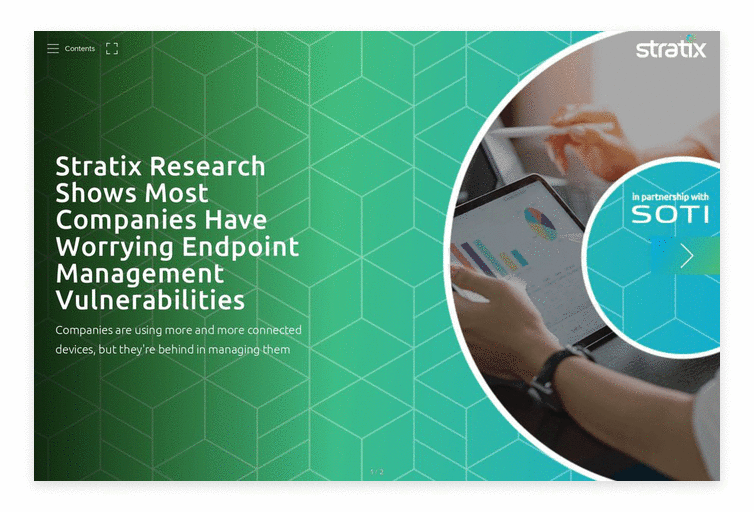Mobile Devices Seen as the Biggest Security Threat for Businesses
Written by Ian Slack
Blog
The threat of a security breach is one of the biggest concerns keeping IT managers up at night. The consequences are usually devasting, and mitigating an attack involves countless hours of work, high costs, and significant reputational damage to the organization. The challenge increases every year as hackers get more sophisticated and the number of endpoints in use grows. The average enterprise manages tens of thousands—including PCs, mobile devices, printers, and IoT—and each is a potential point of access for bad actors.
So, what’s the greatest threat? A new survey of IT leaders by Stratix found the perception is it’s mobile devices. More than 70 percent chose mobile over PCs, printers, IoT, and bring your own device (BYOD) endpoints.
It’s easy to see why. Mobile devices are on the move, connecting to unknown Wi-Fi networks. They’re always on and are usually the front line for phishing attacks and malicious apps. Add that they’re frequently lost or stolen, and it makes sense that they have a poor security reputation.
However, when we dug deeper into our results, we found a bias for selecting mobile. In the table below, you can see the relationship between the level of endpoint management and vulnerability across all the different device types.
- For organizations scoring their percentage of endpoints adequately managed between 51-75 percent, mobile devices were of the lowest concern, and printers were their highest.
- For organizations scoring their percentage of endpoints adequately managed between 76-100 percent, BYOD and laptops were the highest vulnerabilities.
The data underscores the importance of a holistic Unified Endpoint Management (UEM) strategy that allows organizations to manage everything from one platform. Our research shows IT leaders realize that having multiple endpoint management platforms is a problem, with 76 percent calling the lack of a comprehensive UEM solution a vulnerability.
UEM protects by enforcing consistent security policies across all devices, not just mobile—including PCs, printers, IoT and BYOD. It ensures that devices are up-to-date with the latest security patches, antivirus definitions, and compliance requirements.
But the benefits of UEM go much further than security. By automating routine IT tasks across all devices from a single platform—instead of multiple systems—organizations simplify IT operations and dramatically improve productivity, which means cost savings and reduced administrative overhead.
UEM solutions also enhance the overall user experience by providing a consistent and seamless environment across different devices. This increases user satisfaction and better adoption of technology within the organization.
But our research found organizations are behind in adopting UEM solutions.
Only six percent had one platform, while the majority averaged between two and four. That’s because mobile solutions were adopted piecemeal within companies, and each often had its own mobile device management (MDM) platform. Because they’re stuck in multi-platform endpoint management environments, organizations are not secure enough, are wasting resources, and are missing opportunities for cost savings.
SOTI’s One Platform and MobiControl are good examples of how organizations can improve IT operations with UEM. When devices go down in the field, SOTI XSight diagnostic intelligence gets them up and running quickly and on the first call. By leveraging advanced diagnostics and analytics, IT administrators can improve performance and reduce operating costs of business-critical operations.
Interested in talking about improving your endpoint management strategy? Reach out to Stratix today.

Stratix Research Shows Most Companies Have Worrying Endpoint Management Vulnerabilities
Read the full research report we did in partnership with SOTI, where we dive in deeper to examine why organizations aren't doing better in this area.
Read Research Report













